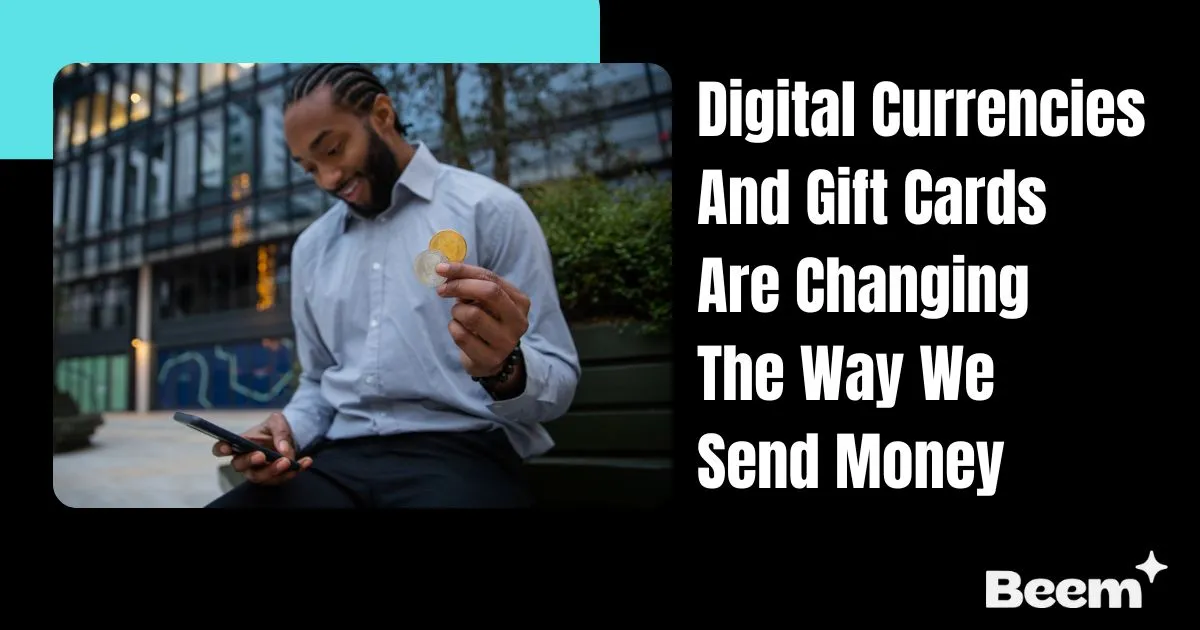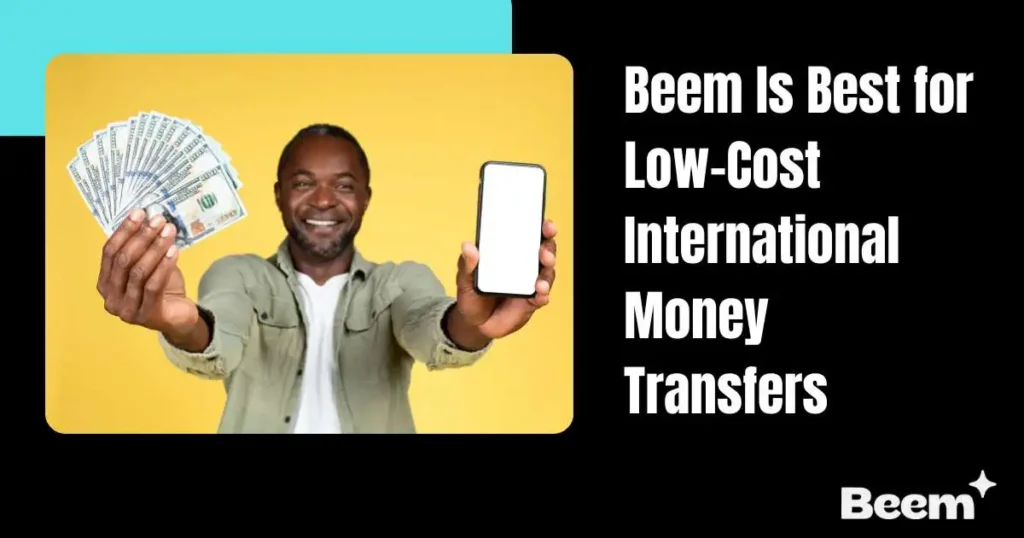At A Glance
Dollars no longer have to travel by SWIFT rails and brick-and-mortar agents. In 2025, US senders can move value abroad in seconds with USD-pegged stablecoins or even an Amazon Pay e-gift card that a cousin in India turns into rupees on UPI. Below, you’ll learn exactly how digital currencies and gift cards are changing the way we send money, what they cost, and when gift cards may beat crypto for the unbanked and underbanked.
Why This Matters in 2025
Americans remit tens of billions yearly to family, freelancers, and suppliers overseas. Yet legacy wires still charge $15–$50, currency exchanges layer on hidden spreads, and weekend cutoff times delay urgent help. Global digital-remittance revenue is projected to grow from $24.5 billion in 2024 to $60 billion by 2030 – a 16% CAGR – precisely because senders are ditching outdated rails for faster, cheaper alternatives.
Today’s toolkit includes:
- Public crypto (Bitcoin, Ethereum)
- USD stablecoins (PayPal USD, USDC)
- Experimental CBDCs (central-bank digital currencies)
- Tokenized bank deposits (JPM Coin, Citi Token)
- Digital gift cards — an overlooked but powerful bridge for recipients without bank accounts or crypto wallets
The Four Kinds of Digital Currency
| TYPE | KEY TRAITS | POPULAR US APPS | TYPICAL US CASE |
| Public Crypto (BTC, ETH) | Decentralized, price-volatile | Coinbase, Cash App | P2P tips, emergency aid when banks fail |
| USD Stablecoins (USDC, PYUSD) | Pegged 1:1 to dollar; low volatility | PayPal, Coinbase, Strike | Everyday remittances, merchant payouts |
| CBDCs (pilot stage) | Issued by central banks; intermediated wallets | FedNow pilot banks | Future real-time government payments |
| Tokenized Deposits | Commercial-bank IOUs held on chain | JPM Coin, Citi Token Services | Large B2B settlements, treasury ops |
Why Stablecoins Lead Retail Remittances
Stablecoins now have a market cap of $246 billion and settled for $28 trillion last year, more than Visa or Mastercard. Dollar-pegged coins dominate because US senders and foreign recipients can use a familiar unit of account while avoiding wild crypto swings.
Regulatory momentum is also strong. The proposed STABLE Act of 2025 aims to bring bank-level oversight to issuers, while the companion GENIUS Act would mandate real-time reserves audits. Clearer rules equal lower compliance overhead, and ultimately lower fees, for consumers.
Digital Gift Cards: The Overlooked Bridge Between Cash and Crypto
Most articles stop at “use a stablecoin.” But what if your aunt in Rajasthan, India, has no bank account and finds crypto intimidating? Enter digital gift cards.
Mini-Case: $100 Amazon Pay e-Gift → Rupees in Minutes
- You (in Texas) buy a $100 Amazon.com e-gift card on Gyft and email the code.
- Recipient (in Jaipur) logs into Amazon India, adds the code to the Amazon Pay balance, then:
- Pays utility bills or groceries at thousands of merchants supporting Amazon Pay, or
- “Swaps” the balance to a Paytm wallet via a peer-to-peer marketplace, or
- Lists the code on a resale site like CardCash or Gameflip for 85–95¢ on the dollar.
No SWIFT code, no KYC hurdles — just a smartphone and an email address.
How to Send a Digital Gift Card from the US
| STEP | ACTION | DETAILS |
| 1 | Pick a reputable store | Amazon eGift, GiftCards.com, PayPal Digital Gifts |
| 2 | Pay in USD | Use U.S. debit/credit card or PayPal balance |
| 3 | Send instantly | Enter recipient’s email; include redemption tips |
| 4 | Share receipt | Screenshot confirmation for authenticity |
Converting to Local Cash
- P2P brokers (Cardtonic, Crafin) pay out in INR via UPI or bank.
- Wallet top-ups let users shift Amazon Pay balance to Paytm or PhonePe and withdraw.
- Direct spend at over 300,000 Indian online and offline merchants that accept Amazon Pay for utilities, food delivery, and travel bookings.
Gift Cards vs. Stablecoins
| FACTOR | GIFT CARD | STABLECOIN |
| Learning curve | Familiar to anyone who shops online | Requires crypto-wallet basics |
| FX exposure | None—value fixed in USD | Minimal if USD-pegged; volatile if BTC/ETH |
| Cash-out rate | 5–15% discount on secondary market | 0–1 % exchange fee |
| Regulatory risk | Low; treated as prepaid value | Evolving licensing rules |
| Best for | Small amounts, unbanked recipients | Larger transfers, crypto-savvy users |
How On-Chain Settlements Beat SWIFT
- Speed: Finality on many networks (Solana, Lightning) is under 60 seconds, compared to 1–3 days for wires.
- Cost: A typical network fee is under $1, versus a $15–$50 wire fee plus a 2–4 % FX markup.
- Availability: Blockchains run 24 / 7 / 365 — nights, weekends, holidays.
- Programmability: Smart contracts enable escrow and conditional payouts, which are vital for freelance milestones or supplier shipments.
Also Read: How Gift Cards Are Changing the Landscape of Digital Remittances
Real-World Scenarios for US Senders
1. Family Support
- Stablecoin Route: Buy USDC on Coinbase and send it to Coins.ph wallet; mom in Manila converts it to pesos for a 0.75 % fee—delivery time under five minutes.
- Gift-Card Route to India: Email a $100 Amazon e-gift; cousin converts to cash via Paytm and pays tuition without stepping into a bank.
2. SMB & Freelancer Payments
An Atlanta design studio pays a Nigerian illustrator in USDT on Tron. The full invoice arrives in 30 seconds at less than 25 cents in network fees.
3. Emergency Aid
After a cyclone knocks out Sri Lanka’s banking network, volunteers raise Bitcoin donations and beam satoshis via the Lightning Network straight to mobile-phone wallets that work offline.

Step-by-Step: Your First Digital-Currency — or Gift-Card — Remittance
- Choose a platform: Coinbase, PayPal, Strike, or Amazon/Gyft for gift cards.
- Verify identity: Complete KYC (driver’s license + selfie) for regulated exchanges.
- Fund your purchase: ACH pull, debit card, or Apple Pay.
- Buy your asset: Select USDC or a USD Amazon gift card.
- Double-check recipient info: Wallet address, gift-card email.
- Send a test transfer/code: $1 or $5 first; confirm receipt.
- Send the full amount.
- Save records: Needed for FBAR if total foreign transfers exceed $10 000 this year.
Also Read: How to Use Digital Gift Cards for Global Transactions
Benefits & Risks at a Glance
| BENEFIT | DETAILS | MAIN RISK | HOW TO MITIGATE |
| Near-zero fees | <$1 per stablecoin transfer | Phishing & scams | Use hardware wallets, verify URLs |
| Instant global reach | Works in 180+ countries | Irreversible errors | Send test tx; copy-paste addresses |
| Privacy for recipients | Gift cards need little ID | Resale discount | Check market rates first |
| Programmability | Smart-contract escrow | Smart-contract bugs | Stick to audited protocols |
Digital Currencies and Gift Cards: What to Watch For in the Year Ahead
- FedNow & US CBDC Pilots: Could merge instant domestic rails with cross-border corridors.
- STABLE Act Progress: If enacted, banks may issue insured stablecoins, further lowering risk.
- Tokenized Deposit Networks: Citi and JPMorgan are testing interbank settlement that could trickle into retail apps.
- Gift-Card-to-UPI Bridges: New Indian fintechs are automating Amazon Pay → UPI swaps, shrinking resale discounts.
Choosing the Right Tool for Your Next Transfer
| RECIPIENT PROFILE | BEST CHOICE | WHY |
| Crypto-ready, needs money fast | USD Stablecoin | Sub-$1 fee, 60-second delivery |
| Unbanked, shops online | USD Amazon e-Gift | No account needed; can spend or cash out locally |
| Cash-only village with agent network | Cash pickup (MoneyGram) | Physical cash, ID verification |
| High-value supplier invoice (> $50 k) | Tokenized bank rail | Regulated bank custody, on-chain speed |
Conclusion
Digital currencies and gift cards didn’t kill traditional remittances — they expanded the menu.
- Stablecoins trim fees and delays for those comfortable with wallets.
- Public crypto bridges economies when banks fail.
- Gift cards sneak value across borders when the recipient is unbanked, under-documented, or more comfortable with Amazon Pay and UPI than with private keys.
Before you hit “Send,” map the recipient’s reality — bandwidth, ID, cash needs — and pick the rail that lands the most dollars in their pocket, not the middleman’s. In many cases, that may be a 16-digit code sitting in their inbox before you’ve even closed the tab.
Apps like Beem offer a modern solution for sending money abroad with its Send Now, Pay Later™ feature, giving users flexibility and speed when supporting loved ones across borders. Download the Beem app here.






